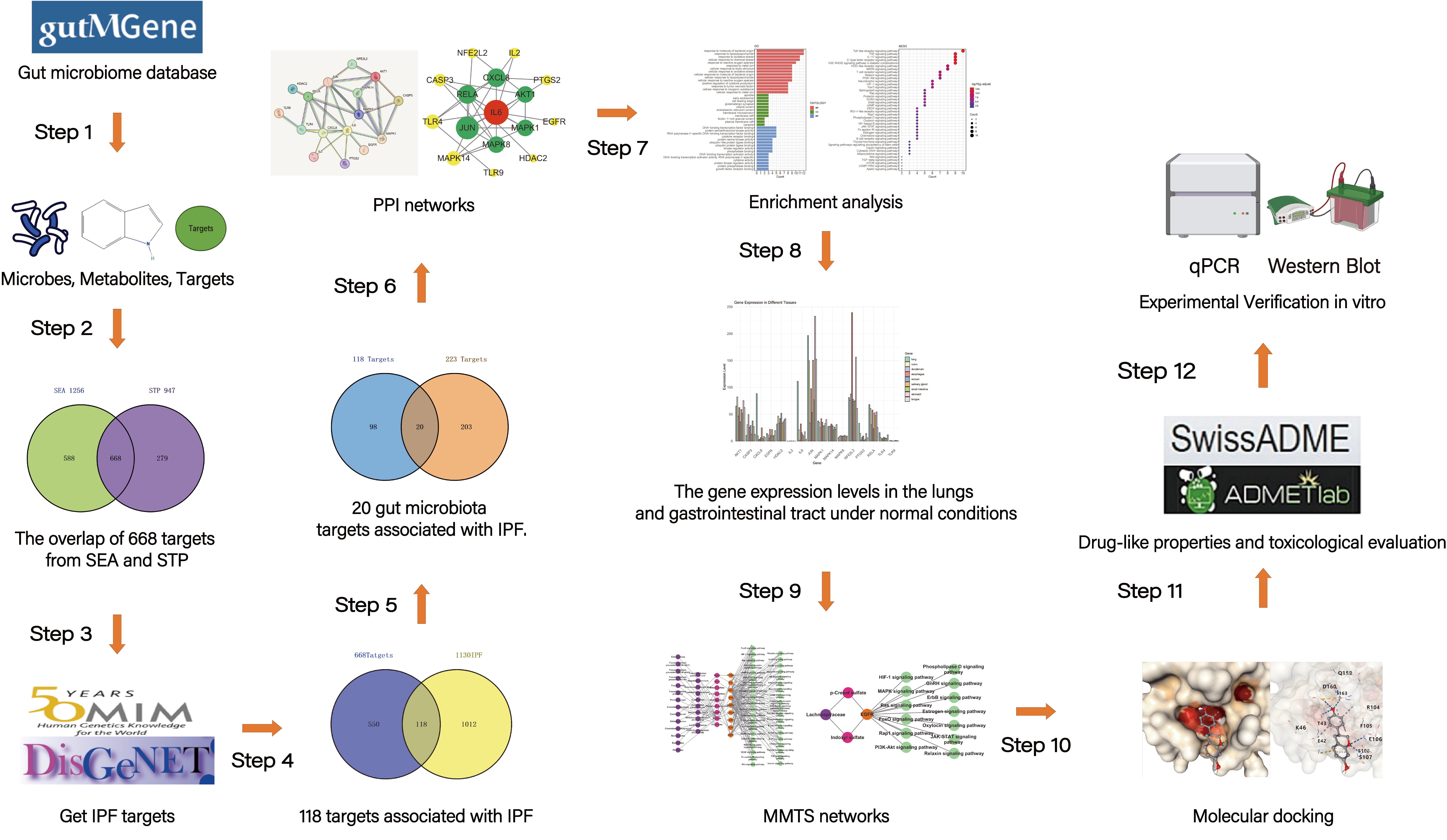Found 3 results
Article
04 November 2024Exploring the Potential Relationship between Gut Microbiome Metabolites and Idiopathic Pulmonary Fibrosis via Network Pharmacology Study
Idiopathic pulmonary fibrosis (IPF) is a chronic, progressive fibrotic lung disease with a poor prognosis. Previous research has revealed that the gut microbiota is associated with human health and immunity, and it interacts with the lung through the “gut-lung axis”. This study explores the potential relationship between Gut Microbiome Metabolites and Idiopathic pulmonary fibrosis via Network Pharmacology Study. The metabolites from gut microbiota were retrieved from the gutMGene database, and gene targets for these metabolites were obtained from previous studies. Gene targets of IPF were obtained from public databases (DisGeNET, OMIM). Subsequently, following the identification of shared targets, IL6 was determined as the core target through protein-protein interaction analysis. Then, a microbiota-metabolite-target-signaling pathway network (MMTS) was constructed using Cytoscape 3.10, and targets with low expression in the lungs and intestines were deleted. The MMTS network revealed that three short-chain fatty acids—acetate, butyrate, propionate, and a flavonoid compound called equol—are IL6-related metabolites. Then, we performed a molecular docking test (MDT) using CB-Dock2 to validate the affinity between core targets and metabolites. MDT confirmed that equol produced by the conversion of isoflavones from Lactobacillus paracasei JS1 was more stable in binding to IL6 than the other three short-chain fatty acids, thereby affecting multiple signaling pathways and influencing the progression of IPF. Finally, we validated this hypothesis through in vitro cell culture experiments, further confirming the effect of Equol.

Review
10 September 2024A Review of the Current Landscape of Anti-Fibrotic Medicines
Fibrosis is defined as the excessive accumulation and disorganized deposition of extracellular matrix components, affecting any organ in the human body. Fibrotic diseases of the vital organs such as lung, heart, kidney and liver can be chronic, progressive, irreversible and fatal. Although fibrotic diseases account for 45% of the mortality in the Western world, the available treatment options are limited in numbers, efficacy and safety. There is certainly a lack of progress in developing novel anti-fibrotics even though the market size for fibrotic diseases is estimated to be ~$30B and several pharmaceutical companies have active R&D programmes in this field. We reviewed the current efforts in developing novel anti-fibrotic medicines focusing on lung, heart, kidney, liver and skin fibrosis. Our analysis revealed an estimated 83% attrition rate from Phase 2 to Phase 3 trials across the five fibrotic diseases. The possible reasons for the slow pace and high attrition rates in developing new anti-fibrotics are discussed and potential solutions are proposed.

Review
12 October 2023New Trends on Photoswitchable Antibiotics: From Syntheses to Applications
Antibiotics are excreted in the environment after being used to treat bacterial infections in human and animals. These residues are poorly eliminated by the actual wastewater treatment processes, affecting animal, human and environmental health. This has led to the emergence of antibiotic resistance in bacterial pathogens. To combat this problem, photopharmacology has emerged in the last decades. This approach, based on the coupling of a drug with a photochromic component, is a promising way to control antibiotic activity by light irradiation and consequently limit antibioresistance. Thus, this review summarizes the study on the effect of the irradiation light on the antimicrobial activity of coupling compounds.
